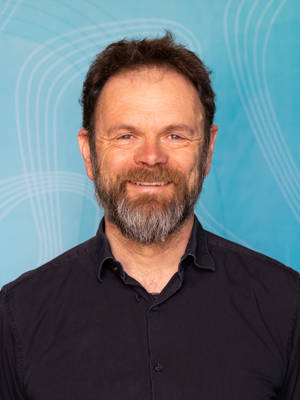Recent research has documented that armed conflict has been in decline over the past decadesand possibly centuries and even millennia. Is this decline likely to continue into the future? Our paper 'Predicting Armed Conflict 2010-2050' indicates this indeed is the case for internal armed conflict - the conflict type that kills the largest number of people today.
The paper takes as its point of departure a large body of research that shows that internal armed conflict are most prevalent in countries with large, poor and illiterate populations, large youth bulges, and that has experienced conflicts in the recent past or in neighboring countries. The United Nations population division expects that poverty, measured as infant mortality rates, will continue to decline in the future, and the IIASA forecasts substantial improvements in education levels. Our simulation-based forecasts of armed conflict based on these forecasts and the statistical association between these factors indicate that internal armed conflict will continue to decline substantially.
In addition to forecasting the future of armed conflict, the project aims at increasing our understanding of the causes of conflict by utilizing simulations and predictions to forecast the onset and spread conflict and of democracy. Other papers look at how conflicts breed conflicts and how UN peacekeeping operations contribute to prevent them.
About the project

The figure shows the proportion of the world’s countries that had an internal armed conflict over the 1970-2009 period. It also shows our forecast for the proportion of countries in internal armed conflict up to 2050. The forecasts indicate a steady decline in the number of conflicts. In 2050, the world will only have half as many conflicts as today if our forecasts are correct.
Objectives
How much conflict will the world see in the coming years? Will the downward trend in the number of conflicts continue? Which countries and regions face the highest risk of conflict? Are our theories of civil war onset capable of predicting future conflict events? This project grapples with these questions.
By using a novel simulation approach, we aim at predicting the actual conflict burden the world will see in the future. The project serves two vital purposes: Academically, we are subjecting the theories of which factors contribute to the breakout of civil war to the hardest possible test. Being able to predict what Imre Lakatos called “novel facts” is the cornerstone of any vibrant research program. Societally we are attempting to build a model which can eventually serve as an early-warning system for policy makers. If nothing else this makes it possible to single out specific regions and countries for special attention. Potentially limiting the break out or spread of conflict. The methodology also makes it possible to effectively evaluate e.g. the conflict reducing effects of peace keeping operations, even making possible actual cost benefit analysis of such interventions.
Methodology
The general set up of the simulation model involves 7 steps:
- Estimate the underlying statistical model
- Make assumptions about the distribution of values for all explanatory variables for the first year of simulation and about future changes to these. For instance, for a simulation from 2011 and onwards, one may use a current estimate of countries’ GDP for 2010 and of their annual growth rates and assume that the growth rate will remain constant in the future.
- Calculate the probabilities of conflict for all countries for the first year, based on the estimates and the assumed values.
- Randomly draw whether a country experiences conflict, based on the estimated probabilities
- Update the values for the explanatory variables.
- Repeat (3)–(5) for several years, e.g. for 2011–2050, and record the simulated outcome.
- Repeat (2)–(6) a large number of times to even out the impact of individual realizations of the probability distributions.
The updating of the explanatory variables is what allows the procedure to take into account complex relationships between the explanatory variables. For instance, we know that conflicts in one country increases the risk of conflict in the neighbouring countries. This can be captured by including a variable ‘neighbour in war’ in the statistical model. If the simulation procedure draws an onset of a new conflict in a country for a given year, this will be reflected as a change in the ‘neighbour in war’ variable for its neighbours and therefore affect their subsequent probability of experiencing conflict. Likewise, the impact of a previous conflict on the likelihood of renewed conflict can be captured.
Variables
We estimate the risk of conflict as a function of a country’s: (i) Conflict history; from previous year and back in time. (ii) Developmental status: Infant mortality rates, proportion of population with education, size of youth bulge, total size of population, whether or not the country has dominant ethnic group, and whether or not the country is an oil producer. (iii) Level of development in the country’s neighborhood and number of conflicts in the neighborhood, as well as regional differences. At the moment we treat all of these factors as exogenous, an assumption that will be relaxed in future iterations of the project. All of these variables have been established by the literature on civil war as key factors in explaining the incidence and onset of conflict. For all of these variables there also exist authoritative projections for how each country until 2050. These projections come from the United Nations Population Division, and from the International Institute of Applied Systems Analysis. The actual specification of the model is the result of extensive testing and out-of-sample validation.
Outcomes
Out-of-sample validation of the model indicates a true positive rate 7--9 years into the future of 0.63 with probability threshold p>0.5, and 0.79 with p>0.3. The corresponding false positive rates were 0.030 and 0.085. The model in other words performs very well. Our predictions indicate that the global incidence of conflict is likely to continue to decrease from the current level, and probably be reduced to about half of the present number of conflict countries in 2050. We take into account several sources of uncertainty, and argue that a considerable share of the uncertainty due to model specifications have been taken into account. The predictions are obviously dependent on the UN/IIASA forecasts that we use, but even a pessimistic projection generates a clear decline in the predicted incidence of conflict. We also conclude that over the next few decades an increasing proportion of conflicts will occur in East, Central, and Southern Africa as well as in East and South Asia.
Financing
The project has been financed by the Norwegian Research Council, NFR 163115/V10, project “Political Institutions, Development, and a Domestic Civil Peace”, and by Håvard Mokleiv Nygård’s doctoral fellowship.
Cooperation
The project is a partnership between the University of Oslo; the Centre for the Study of Civil War at the Peace Research Institute Oslo; the Østfold University College and the Swedish National Defense College.















